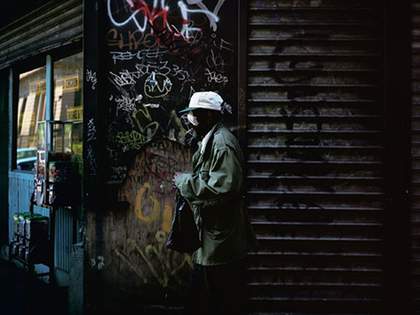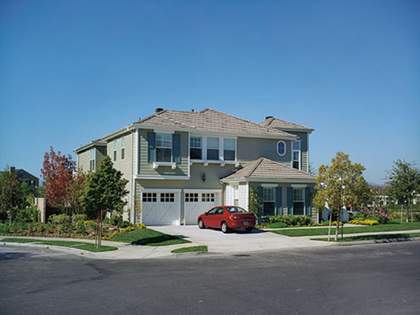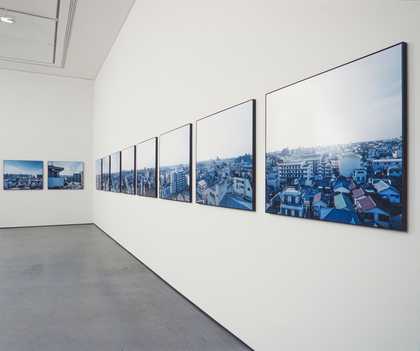The novelist Patrick McGrath once described how, in Moby Dick, Herman Melville viewed the America of his era as a nation bent on self-destruction, ‘as in fact it was, in that it would shortly tear itself apart over the question of slavery’. The publication that accompanies American Night, a new series of photographs by Paul Graham that addresses itself to the historic legacy of slavery and race relations in America, opens with a short discourse on the act of seeing from Moby Dick and closes with a more extensive quote from a contemporary allegory of discord and rupture by the Portuguese Nobel Laureate Jos Saramago.
In Blindness, Saramago chronicles an epidemic of blindness and its impact on the infrastructure of a nameless city. At the beginning of the book, a man sitting in his car waiting for a traffic light to change is suddenly struck blind. But instead of being thrown into darkness, this man sees everything white, as if he ‘had plunged with open eyes into a milky sea’. A doctor at a nearby clinic struggles to arrive at a satisfactory diagnosis of the man’s condition before falling blind himself. Read in tandem with Melville’s contention that only by separating objects and surrounding them with darkness can we bring them into proper focus, Saramago’s description of the particular strain of sightlessness to which his characters succumb – a white blindness – provides us with the key to Graham’s innovative handling of colour photography in American Night.
American Night explores the plight of the African-American underclass at the outset of the 21st century. The book contains 63 landscape-format photographs divided into three distinct groups.

Paul Graham
Blinded Man
New York 1998
The largest group consists of 46 bleached-out images of urban blacktops and parking lots beside which solitary African-Americans wander and wait. Interspersed among these are seven pictures of middle-class suburban homes, all but identical and devoid of humanity. Finally, two-thirds of the way through the plates, Graham presents us with a block of ten street portraits of African-American men and women, many of whom appear to be suffering from some form of physical or psychological impairment; the patches over the eyes of the self-absorbed individuals who frame the section are especially noticeable.
Encountering Graham’s strongly coloured images in the midst of his blindingly white landscapes is a startling experience and throws the houses and people into sharp relief. The buildings radiate an implausibly vivid, mirage-like quality while the portraits give off a heavy, claustrophobic intensity. Conversely, we strain to discern the distant figures in the landscapes; it is as if we have just stepped from the shadows into the unrelenting midday sun and our eyes have not yet accustomed themselves to the glare.
Graham’s work often attracts vociferous opinion and there is little doubt that American Night will generate a comparable outcry as the photographer, a perennial outsider, draws attention to a society outwardly insensible to the consequences of systemic racial inequity.


